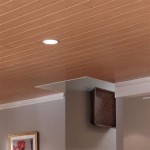When it comes to pool design, the waterline tile is an essential component. Not only does the tile add a decorative touch to a pool, but it also helps protect the pool structure from the corrosive effects of water. Pool waterline tile can come in various materials, such as ceramic, glass, stone and brick. Each type of material has its own advantages and disadvantages, so it’s important to carefully consider which type is best for your particular pool.
Ceramic pool waterline tile is the most common type of tile used in pool construction. It is easy to maintain, doesn’t require much upkeep, and is available in a wide variety of colors and shapes. One of the advantages of ceramic tile is that it doesn’t fade over time and is resistant to algae and other contaminants. Ceramic tile is also relatively inexpensive, making it an attractive option for pool owners on a budget.
Glass pool waterline tile is a less common but more visually striking option. It adds a unique, modern look to any pool, and is available in a range of colors and shapes. Glass tile also reflects light, which adds a bit of sparkle to the pool. The downside to glass tile is that it is more expensive than ceramic tile and is more prone to cracking and breaking.
Stone and brick pool waterline tile add a rustic, traditional look to a pool. Both types of materials are durable and can withstand the elements. They are also relatively low maintenance, but can be more expensive than other types of tile. Stone and brick tile also require sealing periodically to prevent water damage.
No matter what type of pool waterline tile you choose, it’s important to take the time to select the best option for your pool. A well-chosen waterline tile can elevate the overall look of your pool and help protect it from the elements. With the right tile, your pool will look beautiful for years to come.










Related Posts








